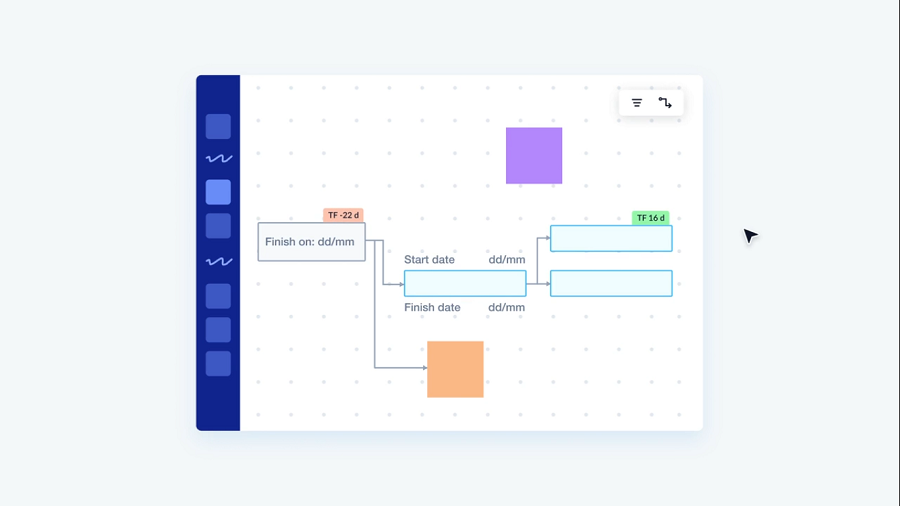 CLOUD
CLOUD
 CLOUD
CLOUD
 CLOUD
CLOUD
Startup Planera Inc. today announced that it has raised $13.5 million in early-stage funding to enhance its project management platform for construction companies.
Sierra Ventures led the Series A round. It was joined by Sorenson Capital, Brick and Mortar Ventures, Prudence VC and Firebolt Ventures.
Before embarking on a new construction project, contractors create a work plan that breaks down the assignment into phases. One phase may focus on building a home’s core structure, while another might be dedicated to insulation and wiring. For each stage of the project, contractors put together a spreadsheet that covers details such as how long it will take to complete the task and what equipment it will require.
Managing the large amount of project information in a construction plan can be a time-consuming chore. According to Planera, its namesake cloud platform eases the task for contractors. The service stores information about construction projects in a centralized repository, visualizes that information and identifies risks such as potential building delays.
Planera’s interface is built around a scheduling tool called the Main Table. It lists the tasks that make up a construction project, the date when each task is scheduled to start and the amount of time it’s expected to require. Main Table organizes this information in a spreadsheet-like format that displays each construction activity as a separate row.
To access additional details about a task, users can click through a set of tabs at the top of the Main Table’s interface. Selecting the “Resources” tab brings up information about the equipment that a given construction activity will require and the number of workers who are set to participate. A “Codes” tab displays the project phases that are likely to be slowed down by delays, while an adjacent interface panel tracks how work on each task is coming along.
Planera also makes it possible to interact with construction data in other ways. Using a tool called Main Canvas, customers can turn a spreadsheet with project information into a diagram comprising interconnected rectangles. Each rectangle represents a construction task, while the connections between the blocks indicate the order in which the tasks must be carried out.
A third interface configuration option makes it possible to represent a project schedule as a Gantt chart. That’s a chart in which to-do items are visualized as bars, with the position of the bars representing the order in which the tasks should be performed.
Planera’s core data management features are complemented by a tool for predicting project delays. It identifies potential construction bottlenecks using the so-called Monte Carlo methods, a collection of statistical algorithms often used to create business forecasts.
Traditional forecasting algorithms generate only one prediction at a time. Such models, might, for example, project that a construction project has a 35% chance of missing its deadline by 10 weeks. The Monte Carlo methods, in contrast, make it possible to map out not just one but several potential future scenarios that may lead to project delays. Project managers can use this information to identify areas for improvement in the construction workflow.
Planera will use its newly announced $13.5 million round to extend its platform’s capabilities. The development effort is set to place a particular emphasis on adding artificial intelligence features. In parallel, the company plans to expand its sales and marketing activities.
Support our open free content by sharing and engaging with our content and community.
Where Technology Leaders Connect, Share Intelligence & Create Opportunities
SiliconANGLE Media is a recognized leader in digital media innovation serving innovative audiences and brands, bringing together cutting-edge technology, influential content, strategic insights and real-time audience engagement. As the parent company of SiliconANGLE, theCUBE Network, theCUBE Research, CUBE365, theCUBE AI and theCUBE SuperStudios — such as those established in Silicon Valley and the New York Stock Exchange (NYSE) — SiliconANGLE Media operates at the intersection of media, technology, and AI. .
Founded by tech visionaries John Furrier and Dave Vellante, SiliconANGLE Media has built a powerful ecosystem of industry-leading digital media brands, with a reach of 15+ million elite tech professionals. The company’s new, proprietary theCUBE AI Video cloud is breaking ground in audience interaction, leveraging theCUBEai.com neural network to help technology companies make data-driven decisions and stay at the forefront of industry conversations.